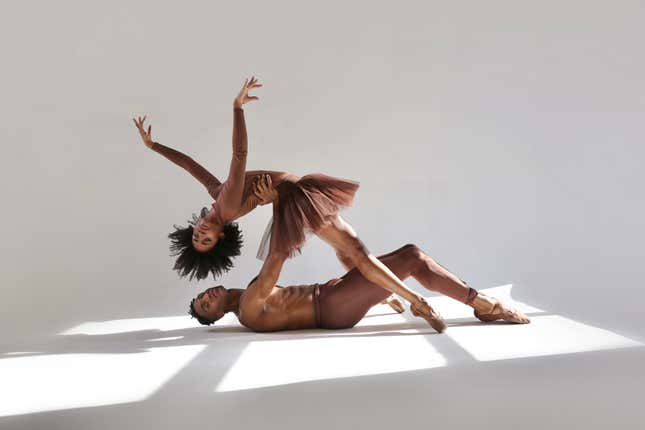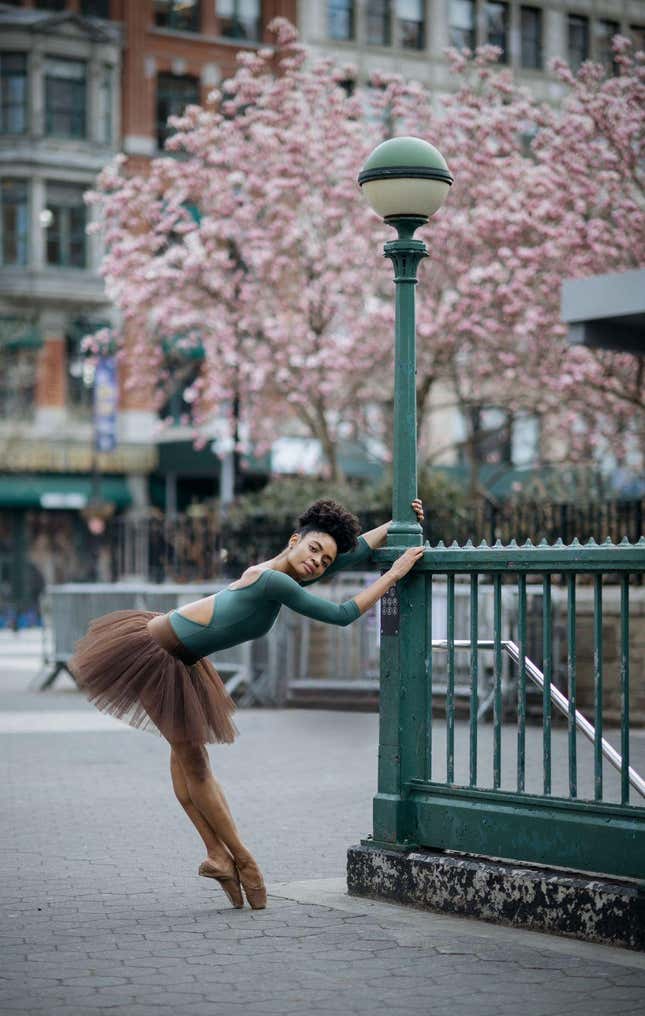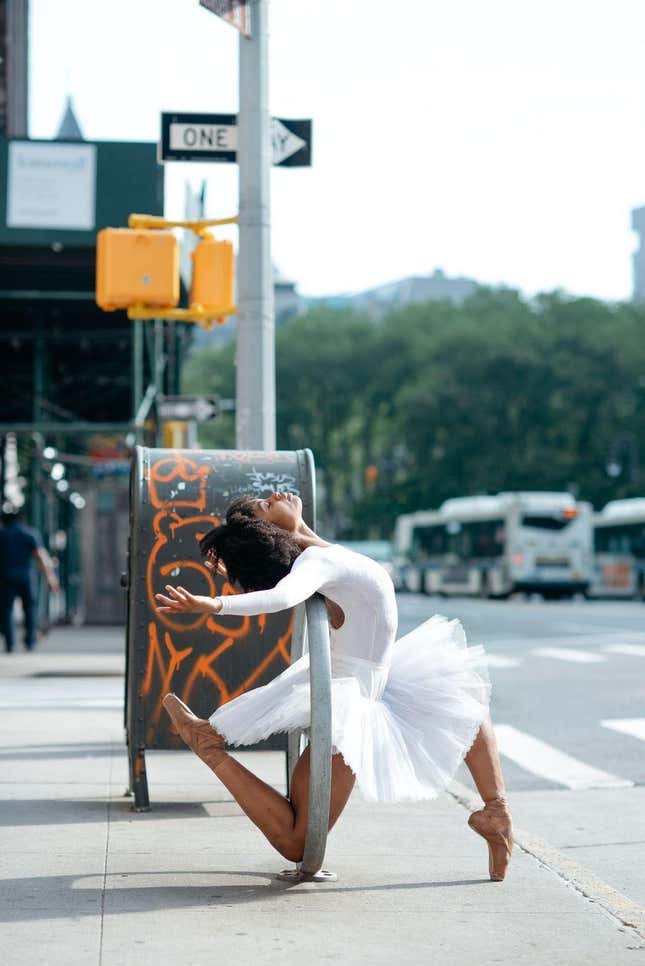A Ballet Teacher Called Me ‘Aunt Jemima.’ Alexandra Hutchinson Helped Me Love the Art Again.
At 6 years old, a racist instructor killed my love for ballet. I finally got to interview the Black dancer who brought it back for me.
In Depth

My first thought upon walking into an all-white beginners’ ballet class at a dance studio in Hammond, Indiana, was, why did my momma bring me here? I was 6 years old, and I’d begged and pleaded to start ballet because it was one of the few styles I hadn’t tried. I knew very little about the art and had never actually seen a Black ballerina, but I was so excited to learn to flex and point and twirl and spin like the music box dancers in my room. I dreamt of being lifted up, like I was flying—that was what I was really there for, the graceful lifts. I couldn’t wait to be suspended in the air. Days before that first class, my mother had practiced twirling me, and I laughed with joy and excitement.
But upon finding myself in a sea of smiling blonde-haired, blue-eyed girls scattering about with pink tutus and toe shoes, my first reaction was to exit stage left. I was already running late and had given my mother a list of things to bring on the first day; but after searching the entire Gary area for the high-end soft leather ballet slippers, we’d come up empty. All we could find were regular pink satin slippers—apparently, the wrong kind.
I stepped inside the cold room, mirrors lining the walls, silver bars running the length of each. In the reflections, I caught side glances and whispers darting my way and suddenly wanted to be invisible. I joined the back of the forming circle, looked down and saw that everyone else had their fancy shoes on except me, and I panicked—clearly, I stood out more than I thought. The dance instructor locked eyes with me, the circle parted, and he said, “Well, hello there, Aunt Jemima, but we don’t allow your granny’s ghetto slippers in this class. You’ll have to leave and come back when your mom can afford the correct shoes.”
The whole class, including the parents there to watch, burst out in laughter like something out of Season 3 of Atlanta, or the movie Get Out. And that’s exactly what I did (after my mom fussed out the instructor)—got the hell out of that studio and never returned to traditional ballet again.
Almost 30 years later, I was scrolling Instagram and came across a video from a Black ballerina’s page. She was rocking a full afro, brown toe shoes, and dark brown skin in a performance with all Black dancers, and I froze for several minutes. This woman, close to my age, was so accessible in her photo: Her smile was wide as she flexed and pointed and leapt through the air, exactly as I’d dreamed of doing as kid. It took me right back to the joy of twirling with my mom, before the sharp sting of being called a racist slur in a sea full of white kids killed my love for ballet. I had to talk to this woman.
After doing some digging, I learned Hutchinson was a professional ballerina who started when we was 3 years old and now is full-time with the Dance Theater of Harlem, an all-Black dance company birthed in response to segregation in the 70’s. It’s not so uncommon to see Black ballet dancers anymore; they now make up about 10 percent of professional performers in the sport, with Misty Copeland being the most visible to white audiences. But Hutchinson, in particular, resonated with my 6-year-old self because of the unapologetic Black pride in her videos and the uninhibited joy that fills her face every time she dances—she’s taken ballet from something stern and rigid and revived it as a source of happiness.
I watched Hutchinson and the other Black DTH dancers move their bodies in sync, like a chorus of fluttering brown swans. They clearly weren’t afraid of or seeking approval from white people; they were claiming ballet for themselves, reimagining what it can be, and proving that Black bodies are welcome and can even thrive in spaces that had tried hard, it seemed, to keep us out.
Hutchinson gave a truly captivating performance this past week at the NYC City Center Dance Festival, in which she danced to Stevie Wonder’s “Higher Ground.” Watching it, I thought, me and my Aunt Jemima slippers would fit in nicely here. With each turn and point, I heard her say, “Reclaim it. Reclaim what he stole from you.”
She makes ballet look like a healing balm–a way to be suspended, weightless and free from the burdens of life that so often seek to submerge Black women. She taught me that ballet can be a moment of solitude, a celebration of an afro, a séance to summon what was lost in the fire. While a white audience looks on at her pirouettes and grand plies, they may not even know that they are witnessing a miracle. This is the way I want to remember ballet: glittering in joy and giving a middle finger to anyone who tried to cast us out of our first class.
-

-

-

-

-

-

-

-

-

-

-

-

-

-

-

-

-

-

-

-

-

-

-

-

-

-

-

-

-

-

-

-

-

-

-

-

-

-

-

-










































